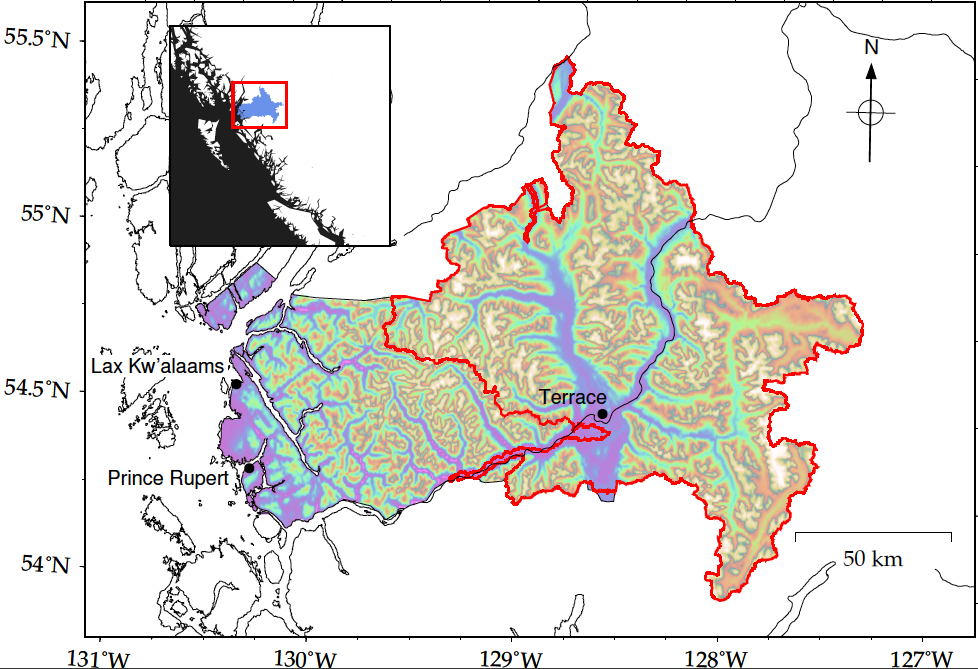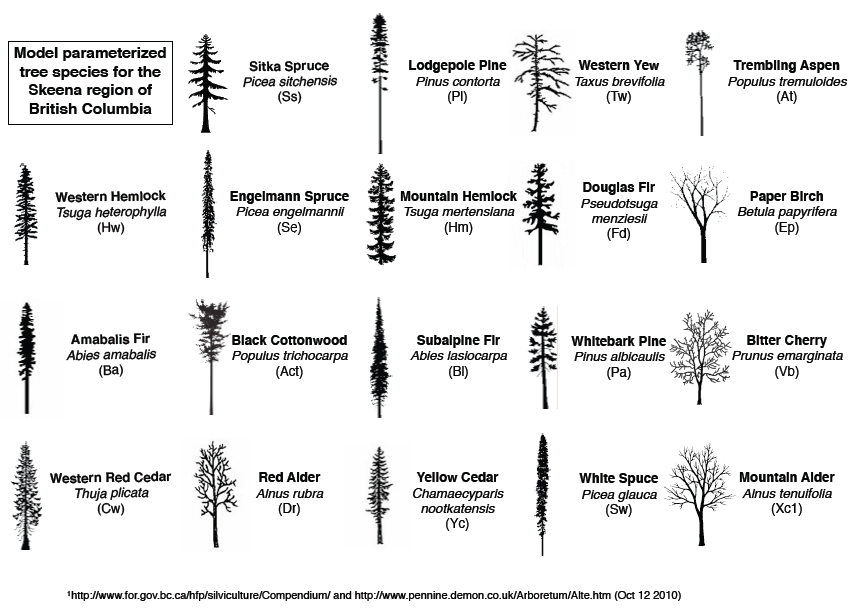Climate change adaptation planning for the northwest Skeena
The Skeena region of British Columbia, Canada is among the world’s most important commercial forest production areas, provides critical habitat for salmon and other wildlife, and is increasingly used as a key transport corridor and industrial area. Climate change compounds threats to the region from other local environmental and social challenges. To aid the communities of the Skeena in adaptive planning for future climate change impacts, I was part of a project that combined biophysical modelling, social science, and community engagement in a participatory approach to build regional capacity to prepare and respond to climate change. I was part of the the natural science team of the project (primarily working with Jed Kaplan (EPFL) and Don Robinson (ESSA Technologies)). I analyzed the historical climate of the regions and prepared materials for public engagement events (see brochure below). I adapted and applied a regional-scale dynamic vegetation model (LPJ-GUESS) to simulate the potential future of forest ecosystems, with a focus on how climate change and management strategy interact to influence forest productivity, disturbance frequency, species composition, and carbon storage. I parameterized LPJ-GUESS for 19 northwestern B.C. forest tree species and drive it with a suite of downscaled projected GCM climate scenarios and an optional forest management scenario at a ~1km spatial resolution over the entire ca. 32,000 square km study area. Our results indicate that future climate change in the northwest Skeena could have its greatest impacts on hydrology rather than forest productivity or carbon cycling. However, even small changes in forest composition, shrinking of the alpine tundra zones, and forest management for optimal productivity, along with ongoing climate change, could have important impacts on hydrology, ultimately affecting fisheries and other valuable natural resources.
The sociological aspect of our study included a team of social scientists that assessed a spectrum of local residents (from both First Nations and settlers groups in three communities) to quantify perceptions of how environmental and socioeconomic issues have changed in the recent past, and the values placed on diverse natural resources at the present. Over the past 20 years, the people they interviewed believe, on average, that their most important environmental resources and the way they have changed over the recent past are: the timber industry (declining); small business (improving), Salmon and Oolichan fisheries (declining), and water quality (improving). The principal drivers of these changes were perceived to be: “natural resource policies”, “availability of natural resources”, and “global economy”. Climate change as a driver of economic and environmental change was perceived as being neither particularly influential at present nor very important for the future of the region; even as climate records for the region already demonstrate warmer winters, decreased snowfall, and decreased spring precipitation over the last half century.
Below are some of the products I created during the project:
The sociological aspect of our study included a team of social scientists that assessed a spectrum of local residents (from both First Nations and settlers groups in three communities) to quantify perceptions of how environmental and socioeconomic issues have changed in the recent past, and the values placed on diverse natural resources at the present. Over the past 20 years, the people they interviewed believe, on average, that their most important environmental resources and the way they have changed over the recent past are: the timber industry (declining); small business (improving), Salmon and Oolichan fisheries (declining), and water quality (improving). The principal drivers of these changes were perceived to be: “natural resource policies”, “availability of natural resources”, and “global economy”. Climate change as a driver of economic and environmental change was perceived as being neither particularly influential at present nor very important for the future of the region; even as climate records for the region already demonstrate warmer winters, decreased snowfall, and decreased spring precipitation over the last half century.
Below are some of the products I created during the project:
- Brochure used during initial community consultations to generate discussion around climate change in the region [7MB]
- Poster presented at the Climate Change Adaptation and Sustainable Forest Management Conference, Vancouver (CA), Feb 2011
- Melton, J. R., J. O. Kaplan, and D. Robinson. 2011. Climate change projections for the Northwest Skeena, in Climate Change Adaptation Planning for Northwest Skeena Communities, Chapter 5. [PDF]
- Melton, J. R., J. O. Kaplan, and D. Robinson. 2011. Vegetation modelling, harvest scenarios, and projected impacts on the landscape, in Climate Change Adaptation Planning for Northwest Skeena Communities, Chapter 6. [PDF]. Appendices [PDF]
- Talk presented at the American Geophysical Union Fall Meeting, San Francisco US, Dec 2011. [7MB]



